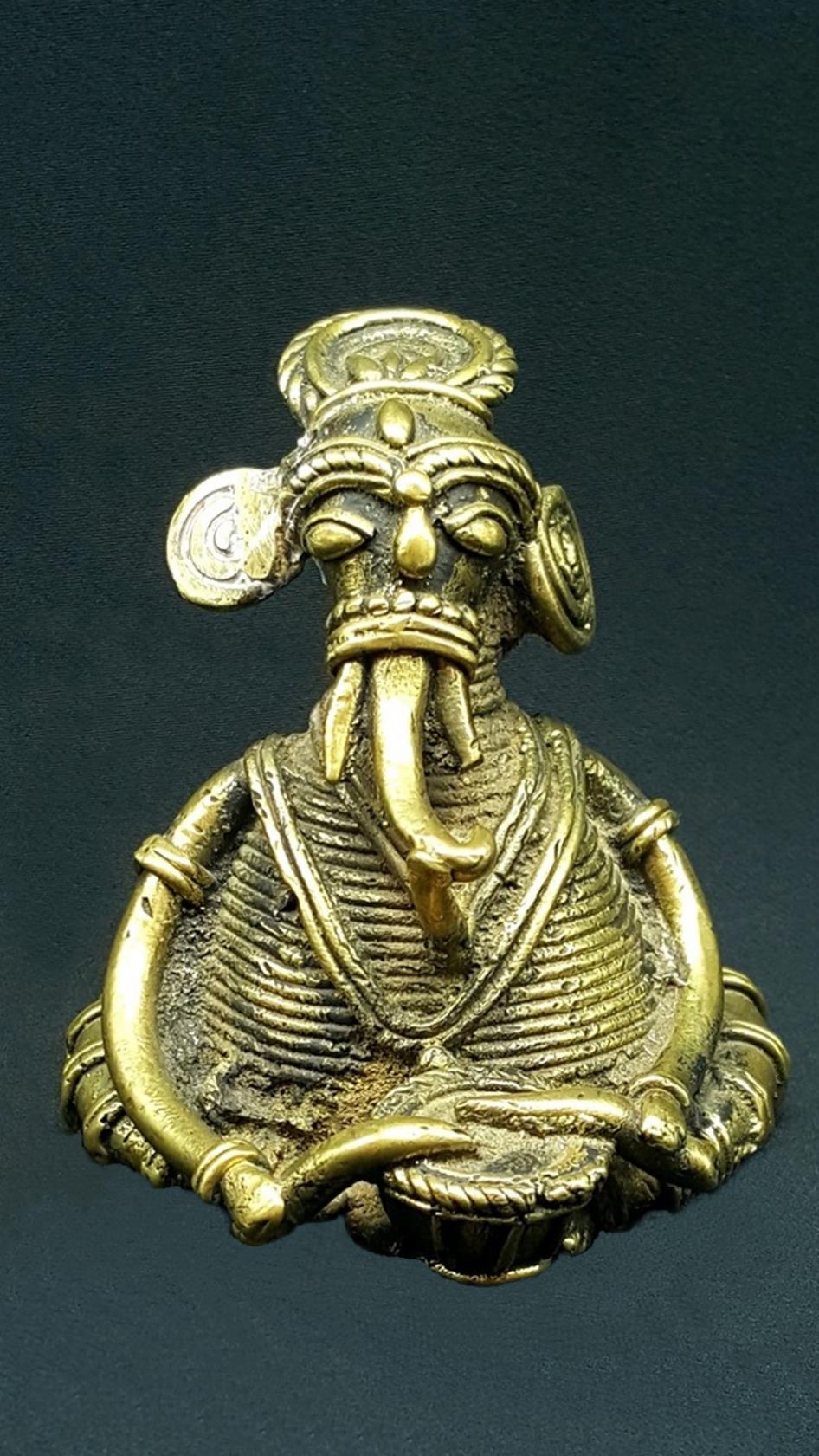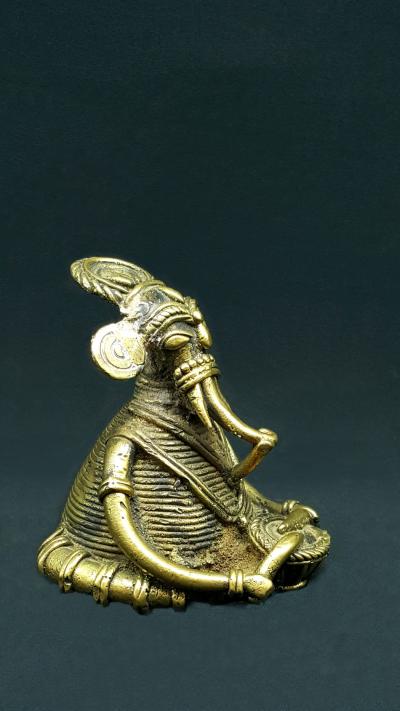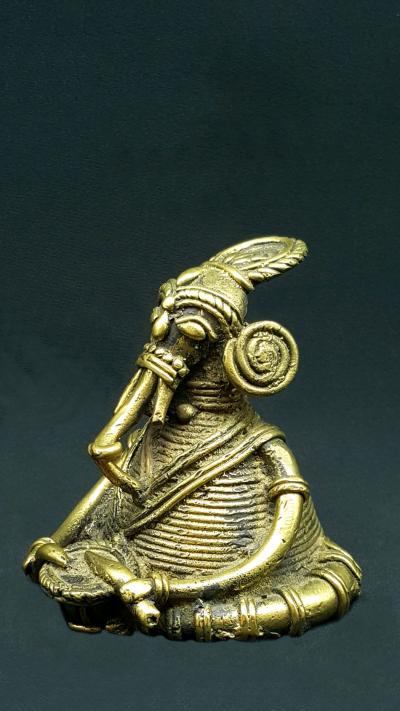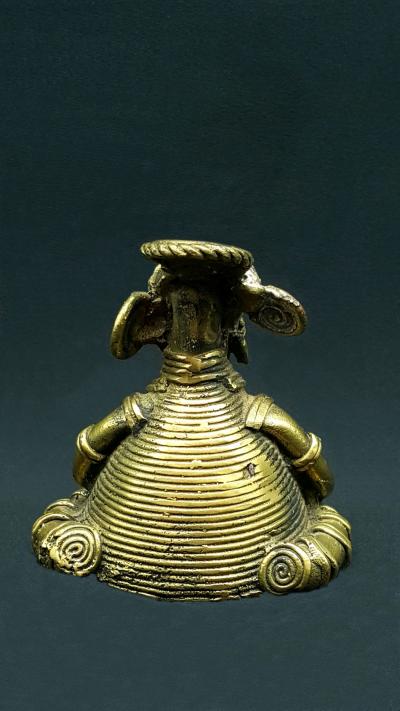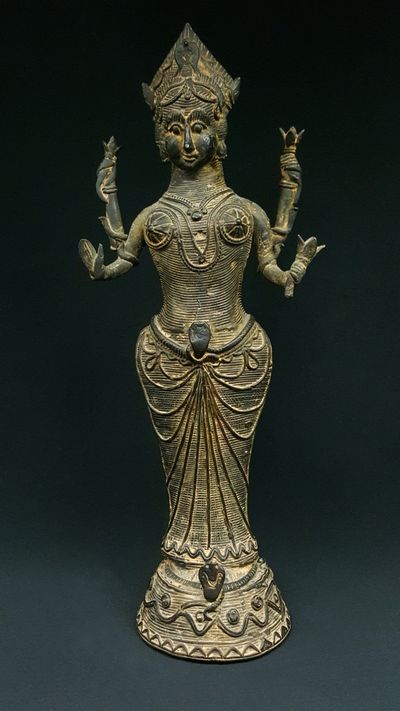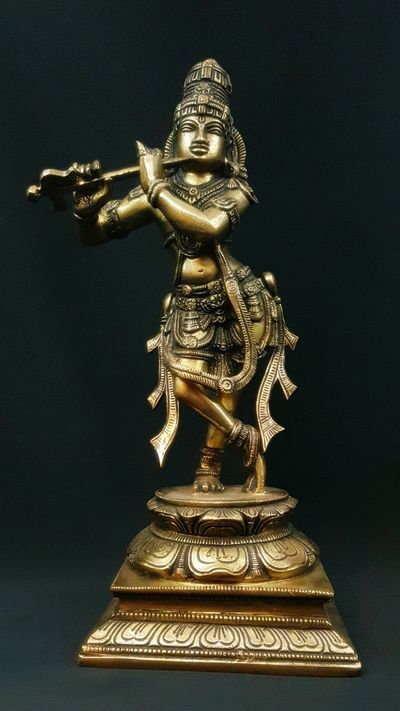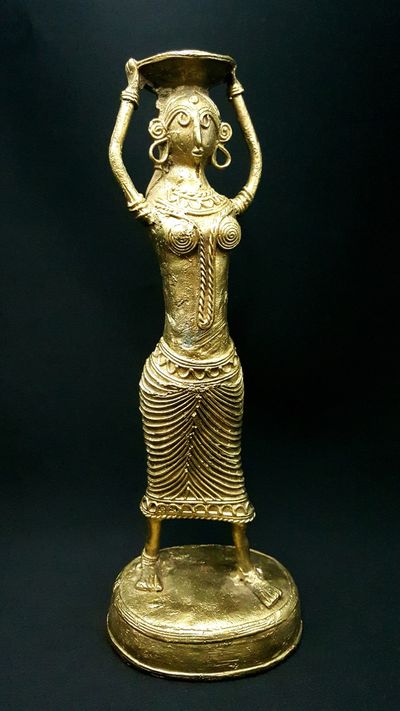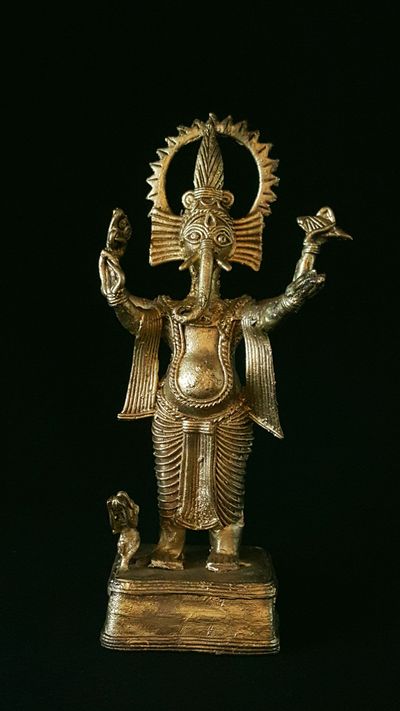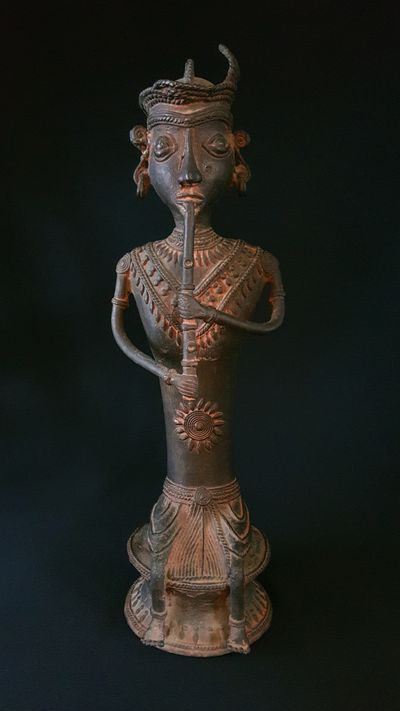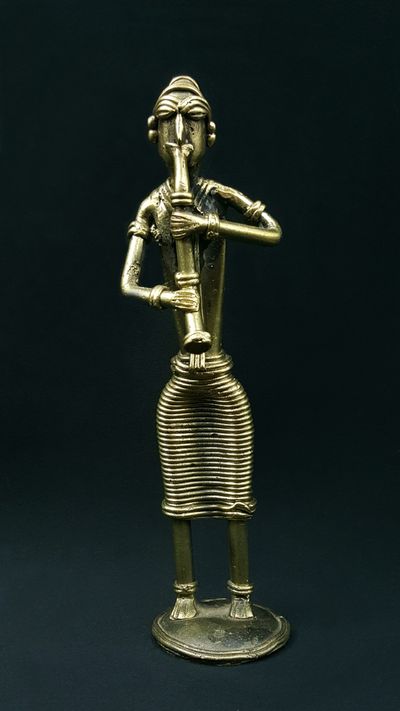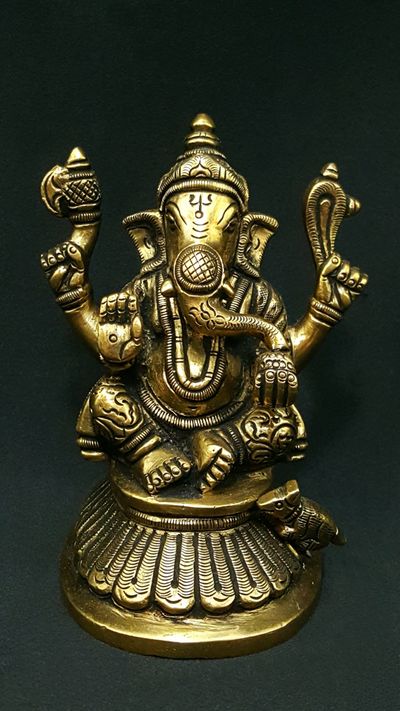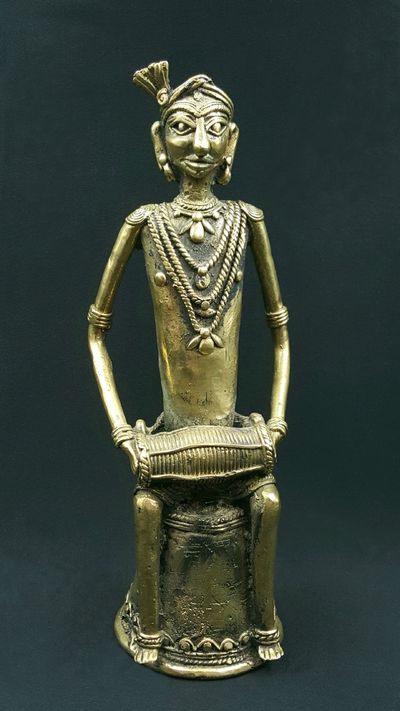Statue Ganesha : la présence du musicien
Le joueur de Nagara
€99.00
Dans cette statue tribale, Ganesh est représenté assis à même le sol, ses 2 jambes à peine visible alors que dans l’art sacré traditionnel hindou, les divinités sont toujours sur un socle ! En savoir plus...
Hauteur : 8 cm
Poids : 0.410 Kg
Art tribal
Cire perdue
Origine : Chattisgarh - Inde
Livraison gratuite UE, Norvège et Suisse
Description
Les Bastars
Le Bastar est un district de l’Inde du Sud dans l’État de Chattisgarh, il fût un royaume indépendant du 14° siècle jusqu’à son intégration à l’Inde en 1948.
La population tribale représente 70% de la population du district de Bastar: les principales tribus sont les Gonds – les Abhuj Maria et les Bhatras. La plupart ont gardé leur tradition (art culinaire, vestimentaire, fêtes…) et leur religion animiste.
Les tribus vivent encore principalement de l’agriculture et des ressources tirées de la forêt (chasse, plantes médicinales, bois…).
Certaines tribus se consacrent à la réalisation de statues en laiton depuis plus de 4000 ans. Cet art, que l’on retrouve aussi dans les États du Madhya Pradesh, de l’Odisha, dans l’Ouest Bengal, du Bihar... est appelé Dokra.
L'art Dokra : un savoir millénaire dans la fabrication de statues
Cet art traditionnel et artisanal n’a pas changé depuis des millénaires (+ de 4000 ans) et la technique utilisée est toujours celle de la cire perdue : un modèle grossier en argile est réalisé puis recouvert de cire par l’artiste qui va lui donner sa forme définitive avec ses détails. L’ensemble est à nouveau recouvert d’un mélange argileux puis chauffé dans un foyer ouvert où un alliage cuivreux sera coulé. Voir Blog.
Les objets produits par les artistes Dokra peuvent être de nature usuels : coupelle, bougeoir… des instruments de musiques (cuivres), ou bien artistiques tels que des bijoux, des animaux : chevaux, éléphants, tortues…, des statues d’hommes et femmes représentant des scènes de vies quotidiennes et des divinités hindous adoptées par les tribus : Ganesh, Lakshmi,...
Posture Assis, dans une positon classique, le ventre proéminent, Ganesh joue la musique céleste. Ce qui est étonnant dans cette statue, c’est l’absence du socle caractéristique de l’art sacré hindou. L’artiste Dokra n’a pas les mêmes contraintes et l’influence de l’animisme n’oblige pas les dieux à être représentés et à troner sur un socle (qui montre le divin en tant que forme manifestée ne touchant jamais pas la terre).
Le ventre de Ganesh est l’aspect dominant de cette sculpture : ainsi bien qu’il soit toujours gros car c’est le centre des énergies vitales, il prend ici toute la place. Il symbolise totalement l’ancrage, la présence ici et maintenant, la stabilité (à tel point point qu’il repose sur le sol !).
Gestes Ganesh pratique le Nagara, un tambour en forme de chaudron, qui à la différence du Dholak, se joue avec deux baguettes.
On peut remarquer la technique particulière de fabrication de statues de l’art Dokra au lignes transversales du ventre, aux oreilles qui marquent l’usage de fils de cire.
A noter : dans l’art tribal, Ganesh n’est pas toujours affublé de sa monture : le rat.
